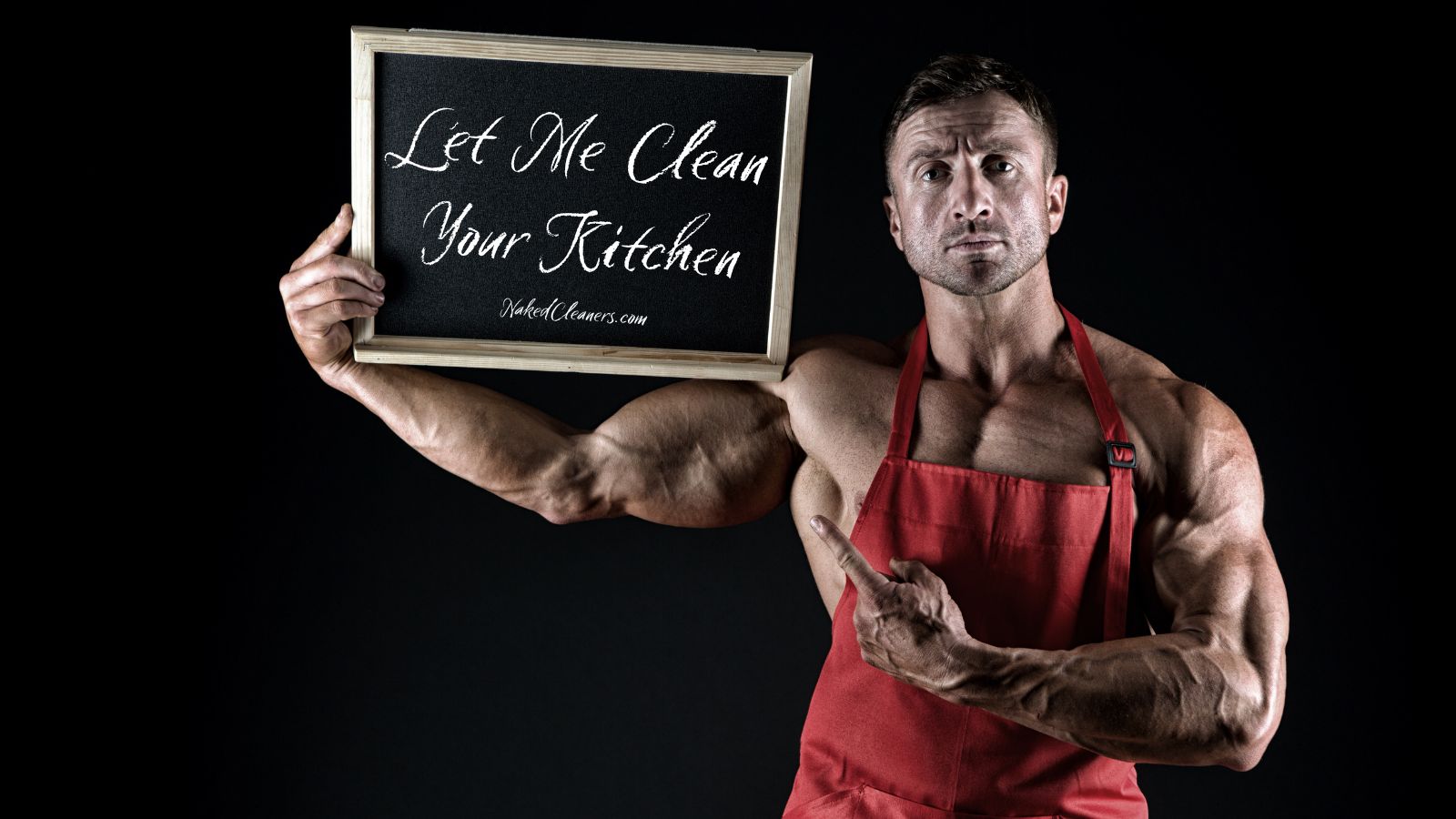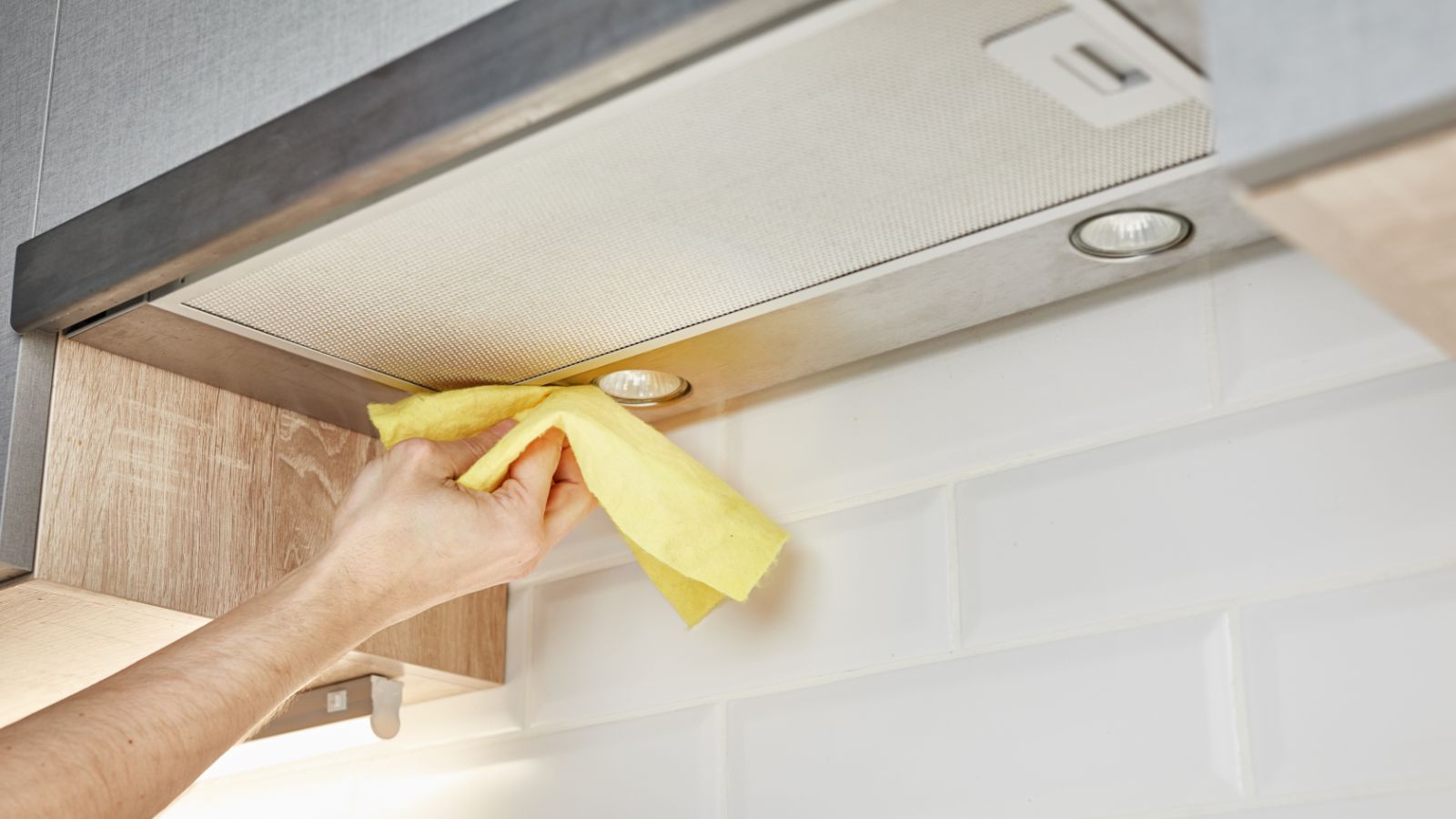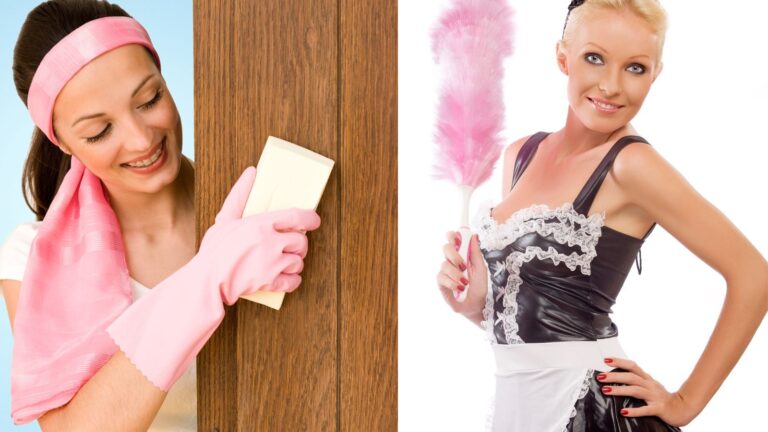
Nobody likes a messy kitchen, and cleaning it is one of those tasks that seems never-ending, which is why the occasional visit of a naked cleaner can be a perfect solution. As soon as the kitchen is clean, it’s so easy to make it messy again! Things like pans being left too long, stubborn stains, and burnt-in grease can make cleaning a kitchen feel like an impossible task. Whether it’s a quick spruce-up or a day-long deep clean, we’ve got a few brilliant kitchen cleaning tips to help you through even the most mammoth cleaning days!
Cleaning The Oven Door
Cleaning kitchen counter surfaces after food preparation can reduce the risk of infection. It’s just as worth taking care of your oven. It’s easy to tell that cleaning an oven is the most taxing part of the kitchen, based on just how many companies exist purely to do this one job! To begin, combine baking soda and water in a shallow basin or jar. When you have a loose paste and the baking soda has dissolved, combine three parts baking soda with one part liquid. Spread the paste all over the glass in your oven after opening the door. We believe that using your fingers to do this is ideal since you can completely cover the glass. Allow the paste roughly 15 minutes to finish its task. The baking soda will begin to work on removing the stubborn stain. After 15 minutes, it’s time for a little elbow grease.
To remove any stuck-on food, use the scrubbing side of a non-scratch cleaning sponge, and then begin to rinse with only water. Work from one side of the glass to the other to remove the baking soda paste after rinsing your cleaning sponge. Keep rinsing your sponge until all traces of the baking soda have been removed, repeating often. The glass should then be dried with a dry, clean cloth. If you discover any leftover baking soda, remove it with a damp sponge and dry the area again. Finally, polish your door with a high-quality glass cleaning agent to get that streak-free sheen.
Cleaning The Fridge
Very few people clean their fridge out when doing a deep clean, but it’s just as important as everything else, if not more. The first thing to do is remove all of the food and beverages from your refrigerator. While doing so, use the chance to check what is still edible and discard anything that has passed its sell-by date. To prevent the food from changing temperature too quickly and running the risk of becoming bad, try to store it in a big space with cold air, as you don’t want to waste food while cleaning out your refrigerator. After that, remove every shelf and drawer and clean them by rinsing them with hot, soapy water. After cleaning them, rinse them with cold water to remove any remaining soap. After that, you can either dry them outside or rinse them with a dry cloth while doing the other steps.
Now it’s time to clean your refrigerator’s interior. Be sure to clean the door’s shelves and the walls, and remember to turn off your refrigerator whilst cleaning so you can work more easily without feeling like it is too cold to clean (and wasting energy). Rinse the interior with hot, soapy water, followed by some cold water to wash the excess soap away. After that, either let it dry naturally or give it a quick wipe with a dry towel, the choice is yours. Your refrigerator’s interior is now clean, so you can put everything back in and turn it back on. Once you’ve got everything in order, don’t forget to clean the outside of your refrigerator as well. Simply rinse the outside of your refrigerator in hot, soapy water, and then use cold water to wash the soap away, same as before, then dry with a clean towel.

Cleaning Worktops
To make life easier, put anything that can be moved into a different room for now. Things like the coffee machine, microwave, bottles, jars, etc and get in the way and make more work for you, so put them somewhere safe for now until you’re all done.
Less is more when it comes to cleaning your counters. Just a small amount of soap and water is perfect for cleaning. Use a warm, moist cloth to remove any stubbornly stuck-on debris, such as food or coffee. (To prevent scratches or damages, make sure you don’t use anything too harsh). Dish soap and a few drops of very warm water should be added to your bowl. To avoid missing any areas, wipe down your counters clockwise from one side of the kitchen to the other, taking your time as you go.
If you have wooden countertops, avoid letting water sit on them, especially at the spots where laminate and wood counter sections converge. If water seeps down into the cracks created by standing water, laminate surfaces may lift and deform, damaging your counters. Any areas where the counter meets another surface, such as the backsplash, trim work, the edge of the kitchen sink, and so on, should receive extra attention. To remove any remaining soap, wipe down the surface once more with a clean, moist cloth. Give the counters one last inspection, and if the clear water in the new bowl of water becomes cloudy, additional scrubbing is required.
Have someone do your dishes
If you’ve got a kitchen full of dirty plates and cutlery, a simple hack, rather than trying to tackle them all right away, is to simply leave them in a sink filled with dish soap and hot water to let all the food and grease breakdown, meaning when you come to give them a good scrub, you can get them all clean in no time at all, making life much easier for you. Or just find someone, who can do them for you. There are many service providers who can support you in that task, some of them while being in the nude. Consider hiring a naked cleaner and see the difference for yourself.
Once the kitchen has had a good, deep clean, it can be much easier to keep on top of and will require considerably less work the next time you go to clean it.
















